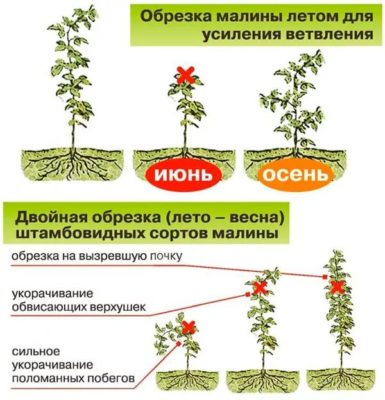How to pinch remontant raspberries in the summer and is this procedure necessary?
There is debate about the advisability of summer pinching remontant raspberries. Some gardeners recommend not to neglect the procedure, which, in their opinion, increases productivity. Others do not see the point in pinching the tips of the shoots, since the remontant variety does not grow in width without it and produces a bountiful harvest from season to season. In this article we will talk about the benefits of pinching raspberries and further caring for the bushes.
Is it necessary to pinch remontant raspberries in summer?
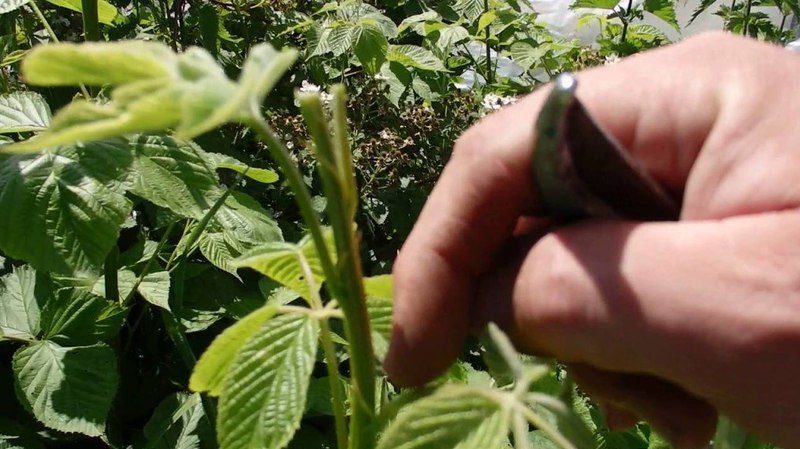
Remontant raspberries are gaining popularity among gardeners, especially those who grow for sale. Its main advantage is fruiting twice a season. If you follow the growing rules, the harvest can be harvested until the end of October.
Remontant varieties are grown as annual plants and completely pruned at the end of the second wave of fruiting. In spring, the bushes grow with renewed vigor and quickly sprout new shoots. Raspberry fruits are formed on the shoots of the current year.
If everything is clear with autumn pruning at the root, then gardeners have different opinions about summer pruning of bushes. Some prefer not to touch the shoots, citing the fact that they do not see much difference between the first and second waves of fruiting. Other gardeners advise pinching only the tips of the shoots without applying pruning methods, which are used in growing common raspberry varieties.
Reference. Pinching remontant raspberries is practiced mainly in the south of Russia in order to slightly delay the timing of fruiting.Due to the summer heat, the fruits often burn in the sun and do not have time to fully ripen.
Features of pinching remontant raspberries
After pinching remontant varieties, the awakening of buds and the growth of side shoots lasts up to 10 days. If you do not pinch, the central shoot will grow more than 1 m. Pinching the top of the central conductor slows down the development of the plant. This procedure does not always have a beneficial effect on remontant raspberries. In some varieties, single fruits do not have time to ripen before the first autumn frosts.
Some varieties are prone to branching without pinching. On such bushes, lateral branches are formed independently in the amount of 3-4 pieces. Varieties Cascade Bryansk, Scarlet Sail, Novost Kuzmina, Kokinskaya, Skromnitsa do not need pinching. For example, the Indian Summer variety needs pinching and produces up to 15 side shoots after the procedure.
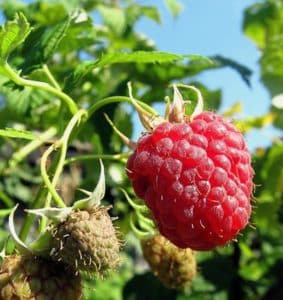
Remontant variety Progress late fruiting does not require pinching. Fruit branches, like bunches of grapes, grow on the tops of young replacement shoots. The total number of buds, inflorescences and fruits is 300-400 pieces. If you pinch, the clusters will not form. Instead, 2-3 side shoots will appear, which will bloom and set some fruits, but they will not have time to ripen before the first frost. The clusters freeze out along with the branches, and in the future they have to be cut off.
The remaining young shoots grow short, and the yield of summer raspberries in the next season decreases. Experienced gardeners recommend plucking out about 50% of the buds, inflorescences, and fruits at the initial stage of formation. The remaining 50% of the fruits will grow large and sweet. This pinching helps preserve the marketable appearance of the fruit until the onset of the first autumn frosts.
There are non-tree-like groups of remontant raspberries, in which, on replacement shoots, the crop is located at the tops in the form of compact clusters (Progress) or fruit branches (Lesnaya, Tachanka, Meteor, Crane, Lloyd George). There is no need to pinch these varieties.
Timing of the procedure
Pinching of remontant raspberries to increase yield is carried out in May - June, depending on the growing region. In the regions of the middle zone, the procedure begins in June, in the south - in May.
Favorable days according to the lunar calendar in 2021:
- May - 2, 5, 6, 12-17, 20-23, 24-26;
- June - 1, 2, 6-8, 11-13, 16, 19-25, 29-30.
How to properly pinch remontant raspberries
Pinching the tops of remontant raspberries is a simple procedure, but it requires skill. The following equipment is used for work:
- garden scissors (secateurs);
- rake for collecting shoots;
- medical alcohol 96%, kerosene, 3% solution of copper sulfate or potassium permanganate to disinfect instruments.
Armed with a sharp tool, they cut off shoots that have reached 60-70 cm in height, or rather, pinch off 20-25 cm of the tops. After this procedure, 3-4 side shoots are formed in the upper part of the bushes, and the stem itself becomes coarser. Pinching allows you to grow shrubs without using trellises, increasing the yield and size of fruits due to side shoots.
Post-procedure care
Remontant raspberries are more demanding in terms of lighting, heat, moisture, and soil fertilization compared to conventional varieties. The increased need for nutrition is due to high yield, which is 2-3 times higher than that of summer varieties.
Despite the fact that raspberries are a moisture-loving plant, you should be careful with the remontant variety.Overflow and stagnation of moisture in the area should not be allowed. This leads to rotting of the rhizome and death of small roots, due to which remontant raspberries reproduce.
Most in demand method of watering raspberries — sprinkling. Water is supplied from a hose with a sprayer or through sprinklers. This type of watering is especially effective in hot weather: branches, leaves, and soil around the bushes are completely wetted, and air humidity increases significantly. The only drawback is the high water consumption.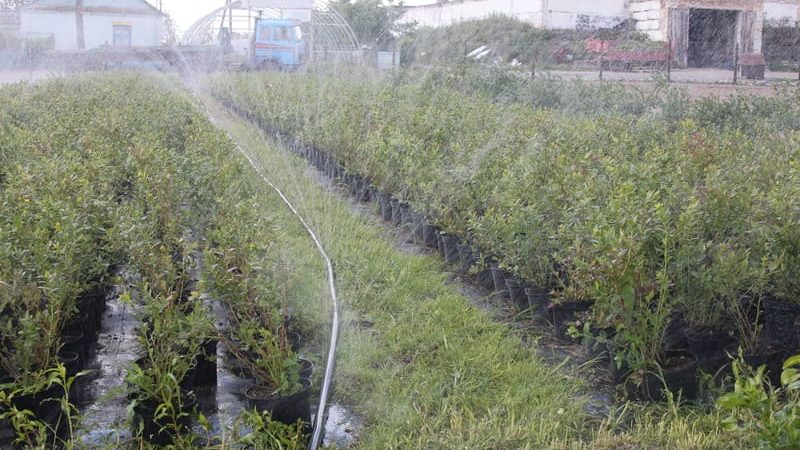
Many gardeners prefer a more economical method of watering - through ditches. They dig holes up to 15 cm around the bushes and supply water from a bucket or hose into them. On raspberry plantations, it is convenient to use drip irrigation, which allows you to evenly moisten the soil. An automated water supply system through pipes is being installed on the site. The advantage of this method is that moisture reaches the roots in doses.
The soil in the tree trunk circle is not loosened deeply - 5-7 cm. To reduce the frequency of loosening, the area is mulched with peat or humus.
Advice. Some of the ovaries must be removed, since raspberries are not able to fully nourish the fruits.
Remontant varieties are rarely attacked by insects and fungal infections. The secret lies in the life cycle pests adjusted to the life cycle of ordinary raspberries, which bear fruit in the second year after planting. Fungal infections of raspberries cannot fully develop on the bushes, since at the end of autumn the shoots of remontant raspberries are completely cut off along with fungal spores and viruses. For the same reason, there is no need to worry about wintering plants.
During the period of fruit formation, the plant needs feeding potassium and phosphorus. The lack of these microelements leads to inhibition of bush growth. With potassium deficiency, the leaves wrinkle and turn dark brown at the edges. With a phosphorus deficiency, the shoots grow long and thin, and the leaves turn purple.
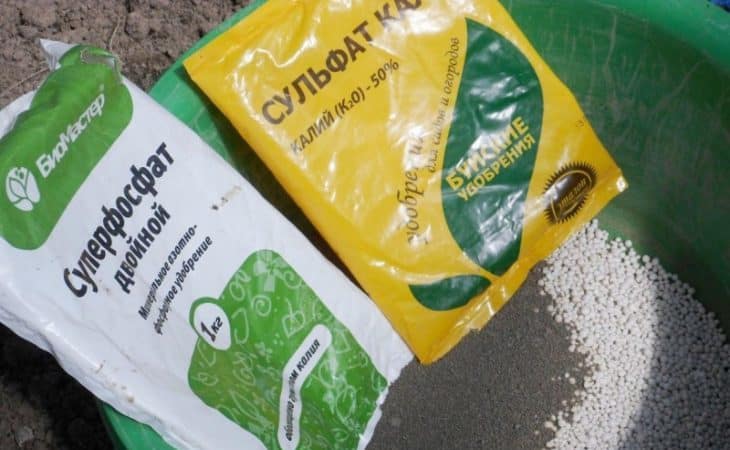
To maintain health and fruiting, improve the taste of fruits, raspberries are fertilized with foliar feeding "Crystalon" (10 g / 10 l). This increases crop productivity by 30% and fruit sugar content by 3%.
Used for root feeding liquid fertilizers (“Ideal” - 30 ml / 10 l) or dry mixtures with potassium sulfate (30 g/m²), potassium magnesia (15 g), superphosphate (60 g). Dry substances are scattered under the bush and the soil is watered with warm water.
In the fall, when digging, potassium and phosphorus are embedded into the soil (40 g superphosphate, 20 g potassium sulfate/m²). On the eve of the first frost, water-charging watering is carried out - 20 liters of water for each bush. The root zone is mulched with humus. After the second harvest the branches are completely cut off, leaving stumps no more than 5 cm high. In cold regions, areas are covered with agrofibre or tarpaulin to protect the bushes from freezing.
Advice from experienced gardeners
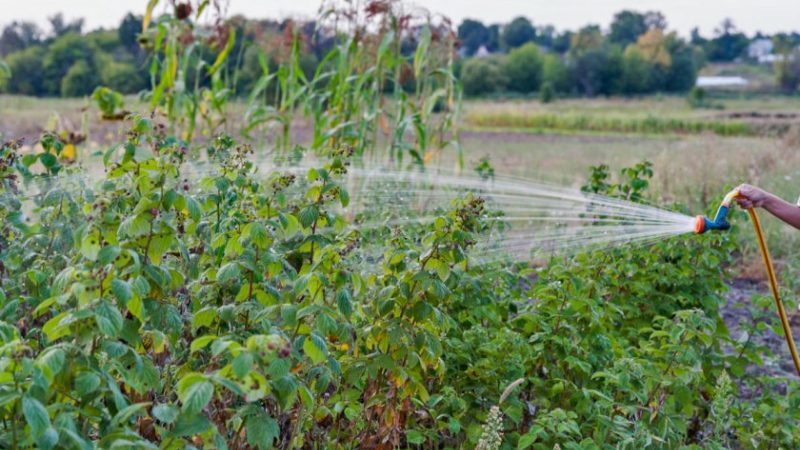
Growing technology and care remontant raspberries are not much different from the agricultural practices of conventional varieties. However, experienced gardeners advise adhering to some rules in order to harvest a bountiful harvest from season to season:
- If you don't spend the autumn pruning of fruit-bearing shoots, you can get a harvest from old shoots in early summer, and from new shoots from August to October.
- Some gardeners prefer to harvest once a season because they believe that old shoots squeeze the strength out of the plant early in the season, resulting in a large harvest not being possible in August.However, remontant varieties are good because they make it possible to get 2 harvests per season.
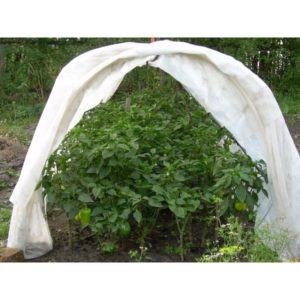 Cover the raspberries
Cover the raspberries - Remontant raspberries most need watering during the period of flowering, formation and ripening of fruits. When watering, it is important to spill the soil 0.5 m deep.
- Weak growth must be completely removed during the season to prevent thickening of the plantings.
- The bushes will not spread wider if they are fertilized with potassium-phosphorus fertilizers in the summer. Nitrogen-containing fertilizers are left for spring.
- The roots of remontant raspberries continue to grow even at low temperatures, so the plantations are covered with non-woven fabric to protect the roots from freezing.
- Pruning of remontant varieties is carried out after leaf fall, since the leaves support the growth of roots and the formation of new year buds.
Conclusion
Each gardener makes the decision to pinch remontant raspberries based on their own experience. Experienced summer residents advise using the trial and error method when determining whether a particular variety needs a procedure or not.
Some varieties are prone to branching without pinching; side shoots form independently (varieties Cascade Bryansky, Scarlet Parus, Novost Kuzmina, Kokinskaya, Skromnitsa). At the same time, the Indian Summer variety needs a procedure for better branching. Pinching remontant raspberries is practiced in the southern regions in order to shift the timing of fruiting. The procedure is performed in May. In colder regions, pinching is carried out in June.
